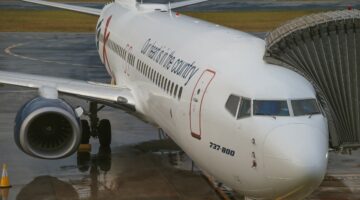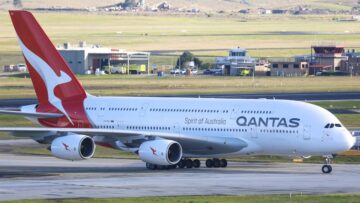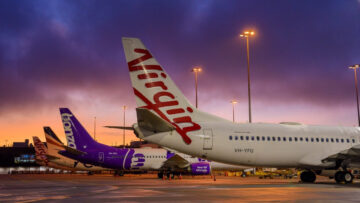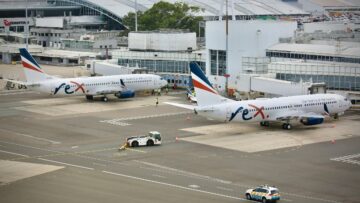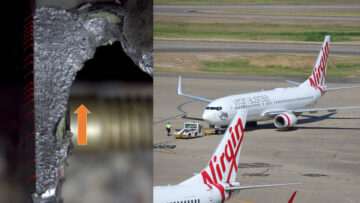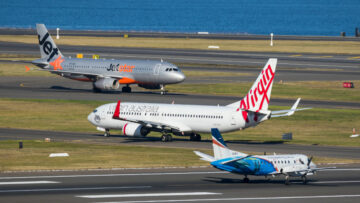
Domestic aviation capacity finally stabilised in 2023 after several turbulent years during the pandemic, the ACCC has said.
December 2023 saw 6 million domestic seats across all major airlines, about 95 per cent of 2019 levels. Around 4.8 million people flew domestically in December 2023, 94 per cent of December 2019 figures, and rates generally stayed at about 90 to 95 per cent of pre-pandemic figures throughout 2023.
In its latest Domestic Airline Competition in Australia report, the ACCC described a “challenging” recovery from the pandemic, with COVID-19 waves cutting short ramp-ups in capacity, reductions in workforces, and supply chain issues all impacting the sector.
“Even by the end of 2023, the industry has yet to have a month where it flew at least the same number of passengers or seats that it did in the equivalent month in 2019,” the report read.
“In December 2023 the industry recorded a recovery rate of 94% for passengers and 95% for capacity (as measured by seats) compared to December 2019.
“Despite this, it appears reasonable to consider the recovery period over. Various measures for the industry have stabilised, particularly over the past six to nine months, with movements appearing to represent seasonal factors more than an incremental return to pre-pandemic levels.
“These measures include passenger volumes and airline seat capacity, airline route network size, airfares and cancellations and delay rates.”
The competition watchdog noted numerous differences in domestic aviation from before the pandemic, including the shuttering of Tigerair and Virgin’s rebranding as a mid-range carrier, leaving Qantas and Jetstar with less competition on the premium and low-cost ends of the market; Rex’s move into domestic jet operations; and the advent of Bonza as Australia’s first high-capacity airline in 15 years.
“The expansion of Rex and the launch of Bonza has meant more people are flying on routes with three or even four competing airline groups. Prior to the pandemic, no routes had more than two competing airline groups,” the report read.
“The industry also offers greater connectivity, namely with Bonza launching services on routes that were not previously served.”
The resumption of ACCC aviation monitoring was one of the key recommendations from the recent Senate Select Committee on Commonwealth Bilateral Air Service Agreements, chaired by Nationals Senator Bridget McKenzie.
King and Chalmers took a swipe at the previous Morrison government for what they said was an inadequate response to the ACCC’s previous monitoring regime, which ended in June last year, saying they had found “a better way” to restart it.
“The 12 reports under the previous government found declining service standards and higher prices but were not acted on,” they said in October.
“In contrast, the Albanese Government will use ACCC monitoring to help inform the Aviation White Paper which is setting the policy direction for the sector out to 2050.
“We will ensure healthy competition plays a key role in shaping the future of the sector.”
- SEO Powered Content & PR Distribution. Get Amplified Today.
- PlatoData.Network Vertical Generative Ai. Empower Yourself. Access Here.
- PlatoAiStream. Web3 Intelligence. Knowledge Amplified. Access Here.
- PlatoESG. Carbon, CleanTech, Energy, Environment, Solar, Waste Management. Access Here.
- PlatoHealth. Biotech and Clinical Trials Intelligence. Access Here.
- Source: https://australianaviation.com.au/2024/02/pandemic-chaos-ends-as-domestic-aviation-returns-to-stability/
- :has
- :is
- :not
- :where
- 1
- 12
- 15 years
- 15%
- 2019
- 2023
- 2050
- 4
- 6
- 8
- 89
- 90
- 95%
- a
- About
- across
- After
- agreements
- AIR
- airline
- Airlines
- All
- also
- an
- and
- appearing
- appears
- ARE
- around
- AS
- At
- Australian
- aviation
- before
- BEST
- Better
- but
- by
- Capacity
- cent
- chain
- Chaos
- COM
- committee
- commonwealth
- compared
- competing
- competition
- Connectivity
- Consider
- contrast
- COVID-19
- cutting
- December
- Declining
- delay
- described
- DID
- differences
- direction
- Domestic
- domestically
- during
- end
- ends
- ensure
- Equivalent
- Even
- expansion
- factors
- Figures
- Finally
- First
- flying
- For
- found
- four
- from
- future
- generally
- Government
- greater
- Group’s
- had
- Have
- healthy
- help
- higher
- HTTPS
- impacting
- in
- include
- Including
- incremental
- industry
- inform
- into
- issues
- IT
- ITS
- Key
- Last
- Last Year
- latest
- launch
- launching
- least
- leaving
- less
- levels
- low-cost
- major
- Market
- max-width
- meant
- measured
- measures
- million
- monitoring
- Month
- months
- more
- movements
- namely
- network
- nine
- no
- noted
- number
- numerous
- october
- of
- Offers
- on
- ONE
- or
- out
- over
- pandemic
- Paper
- particularly
- past
- People
- per
- period
- plato
- Plato Data Intelligence
- PlatoData
- plays
- policy
- Premium
- previous
- previously
- Prices
- Prior
- Rate
- Rates
- Read
- reasonable
- rebranding
- recent
- recorded
- recovery
- reductions
- regime
- report
- Reports
- represent
- response
- return
- returns
- Role
- Route
- routes
- Said
- same
- saw
- saying
- seasonal
- sector
- select
- Senate
- Senator
- served
- service
- Services
- setting
- several
- shaping
- Short
- shot
- SIX
- Size
- Stability
- standards
- stayed
- supply
- supply chain
- than
- that
- The
- The Future
- These
- they
- this
- three
- throughout
- to
- took
- turbulent
- two
- under
- use
- various
- Virgin
- volumes
- was
- watchdog
- waves
- were
- What
- which
- white
- white paper
- will
- with
- year
- years
- yet
- zephyrnet

